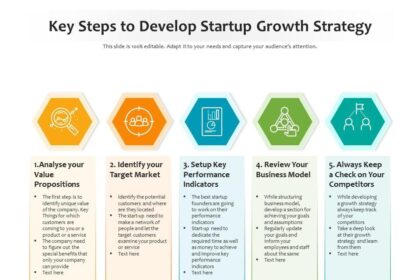Crafting Success: The Art of Assembling Your Startup Team
In the vibrant world of entrepreneurship, where ideas bloom and innovation fuels ambition, the journey to success often hinges on one critical factor: the team. Much like a master artisan carefully selecting materials to create a masterpiece, a founder must thoughtfully assemble a startup team that embodies diverse skills, shared vision, and relentless passion. Each member brings unique strengths to the table, forming a tapestry of talent that can transform a fledgling concept into a thriving enterprise. In this article, we will explore the vital components of building an effective startup team, unraveling the strategies and principles that can help you cultivate a collaborative environment poised for growth and success. Join us as we delve into the art of team assembly, where every choice counts and the path to achievement begins with the people you choose to accompany you on this entrepreneurial adventure.
Building a Diverse Skill Set to Fuel Innovation
In the fast-paced world of startups, innovation is often the lifeblood that distinguishes a thriving company from its competitors. To foster a culture of creativity and problem-solving, assembling a team with a diverse skill set is critical. Each team member should bring unique perspectives and expertise, enhancing collaboration and generating novel ideas. Consider recruiting individuals with backgrounds in:
- Technology: Software developers, data analysts, and UX/UI designers.
- Marketing: Content strategists, SEO specialists, and social media managers.
- Finance: Financial analysts, accountants, and investment strategists.
- Operations: Project managers, logistic coordinators, and quality assurance experts.
To visualize and assess the essential skills you need, it can be helpful to create a skills matrix to identify gaps and opportunities. This matrix serves as a roadmap for recruiting and enabling cross-training within your team, ensuring everyone is equipped to contribute to innovative projects. Below is an example of how to structure your team’s skills, highlighting current strengths and areas for development:
| Skill Area | Current Team Strength | Skill Gap |
|---|---|---|
| Technology | Strong in web development | Lack of data science expertise |
| Marketing | Experienced in social media | Need strategic branding skills |
| Finance | Solid financial planning | Limited investment knowledge |
| Operations | Efficient project management | Need process improvement specialists |

Cultivating a Strong Company Culture for Team Cohesion
Building a resilient company culture is akin to nurturing a thriving garden; it requires attention, patience, and a collaborative spirit. A vibrant workplace not only enhances productivity but also fosters authentic connections among team members. To cultivate such an environment, consider implementing the following principles:
- Open Communication: Encourage transparency and dialogue across all levels of the organization.
- Shared Values: Clearly define and embody the core values that resonate with your team.
- Recognition: Celebrate achievements, both big and small, to motivate your team.
Moreover, it’s vital to create an inclusive atmosphere where every voice is valued. An effective strategy involves regularly soliciting feedback and being adaptable to change. By prioritizing team cohesion, startups can leverage diverse perspectives to drive innovation. Consider utilizing the table below to outline your team’s strengths and areas for collaboration:
| Team Member | Strengths | Collaboration Opportunities |
|---|---|---|
| Alex | Creative Problem Solver | Brainstorming Sessions |
| Jordan | Data Analysis Expertise | Project Stats Review |
| Taylor | Customer Engagement | Feedback Initiatives |

Identifying Synergies and Avoiding Redundancies
Successfully assembling your startup team requires a keen understanding of how individuals can complement one another’s skills and working styles. By actively seeking out synergies, you enable your team members to collaborate more effectively and leverage each other’s strengths. Consider the following approaches to identify these valuable connections:
- Skills Mapping: Create a comprehensive skills inventory for each team member to identify potential overlaps and gaps.
- Cross-Functional Workshops: Organize workshops that encourage team members to showcase their expertise, fostering an environment for creative collaboration.
- Team Dynamics Assessment: Utilize personality assessments like Myers-Briggs or DISC to outline complementary work styles within your team.
While tapping into synergies is crucial, it is equally important to avoid redundancies. Overlapping roles can lead to confusion, wasted resources, and ultimately hinder progress. To ensure each team member has a distinct contribution, consider the following strategies:
| Action | Description |
|---|---|
| Clear Role Definitions | Draft detailed job descriptions that specify individual responsibilities and the expected outcomes for each position. |
| Regular Check-Ins | Schedule consistent meetings to discuss each member’s tasks, ensuring alignment and addressing any role overlaps. |
| Feedback Mechanism | Implement a system for ongoing feedback to catch redundancies early and encourage open communication among the team. |

Empowering Your Team Through Effective Communication and Leadership
Communication is the cornerstone of any effective startup. By fostering an environment where open dialogue is encouraged, team members are empowered to share their insights, concerns, and ideas. This can be achieved through regular check-ins, team-building exercises, and utilizing collaborative tools that streamline interaction. Consider implementing the following practices to enhance communication:
- Weekly Team Meetings: Allocate time for everyone to share current projects and challenges.
- Feedback Loops: Create a system for offering and receiving constructive feedback regularly.
- Celebrating Wins: Acknowledge both individual and team successes to promote a positive atmosphere.
In tandem with robust communication, effective leadership plays a pivotal role in navigating the complexities of a startup environment. Evolving your leadership style to be more inclusive and transformational can inspire your team to reach their full potential. A few critical leadership attributes to cultivate include:
| Leadership Trait | Impact on Team Dynamics |
|---|---|
| Empathy | Fosters trust and strengthens team bonds. |
| Vision | Inspires and aligns the team towards common goals. |
| Adaptability | Encourages innovation and resilience amidst change. |
The Conclusion
In the intricate tapestry of entrepreneurship, the threads that bind a successful startup together are woven from the diverse talents, insights, and passions of its team members. As we’ve explored the nuances of assembling your ideal crew, it’s clear that crafting success goes beyond mere recruitment; it’s an art form that requires vision, empathy, and a dash of intuition.
The journey of building a cohesive and dynamic team is as much about the relationships formed as it is about the skills possessed. Embracing the unique capacities of each individual while fostering an environment of collaboration will not only strengthen your startup but also propel it toward a shared vision of success.
As you venture forth in your entrepreneurial pursuit, remember that each team member is a vital brushstroke in the masterpiece you are creating. Take the time to cultivate this artistic process, and watch as your startup flourishes in ways you never imagined. Ultimately, assembling a team isn’t just about filling positions; it’s about crafting a legacy that stands the test of time. Happy building!



